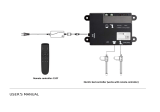
4
GB
- Connect the equipment into an
outlet on a circuit different from
that to which the receiver is
connected.
- Consult the dealer or an
experienced radio/TV
technician for help.
For Customers in
Canada
This device complies with
Industry Canada’s licence-
exempt RSSs.
Operation is subject to the
following two conditions:
() This device may not cause
interference; and
() This device must accept
any interference, including
interference that may cause
undesired operation of the
device.
For Customers in
Europe
Manufacturer: Sony Corporation,
1-7-1 Konan Minato-ku Tokyo,
108-0075 Japan
For EU product compliance: Sony
Belgium, bijkantoor van Sony
Europe Limited, Da Vincilaan
7-D1, 1935 Zaventem, Belgium
Hereby, Sony Corporation,
declares that this equipment is
in compliance with the essential
requirements and other relevant
provisions of Directive 1999/5/
EC. For details, please access the
following URL:
http://www.compliance.sony.de/
Disposal of Old
Electrical & Electronic
Equipment (Applicable
in the European Union and
other European countries
with separate collection
systems)
This symbol on the product or
on its packaging indicates that
this product shall not be treated
as household waste. Instead
it shall be handed over to the
applicable collection point
for the recycling of electrical
and electronic equipment. By
ensuring this product is disposed
of correctly, you will help prevent
potential negative consequences
for the environment and human
health, which could otherwise be
caused by inappropriate waste
handling of this product. The
recycling of materials will help to
conserve natural resources. For
more detailed information about
recycling of this product, please





















